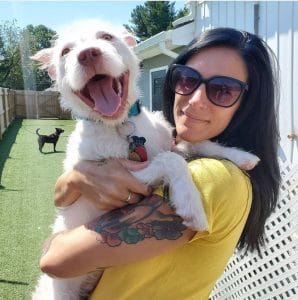
Anxiety can manifest in dogs in a variety of ways. Excessive barking, whining, and even aggression are signs your dog is uncomfortable. These are more present on dogs who are inclined to “vocalize” their discomfort. Some dogs are more timid and will show their anxiety by withdrawing, not eating, and excess licking and scratching. In quieter dogs, it can be harder to tell exactly how they are feeling.
Many dogs will display their anxiety with destructive behaviors such as going to the bathroom inside the house, chewing on furniture, and scratching through carpet and upholstered items. Excessive panting, drooling, tail tucking, and even shaking are good predictors of more destructive behavior to come. This is where situational awareness with your pet can be critical. You must observe their body language.
Recognizing anxiety in your dog is the first step. Discussions with behaviorists and trainers can provide wonderful solutions to make your pet feel safe and secure and enhance the bond between the two of you. Speak to us at the front desk or give us a call for references. I am always just a bark away.
– Carolyn

